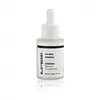What's inside
What's inside
 Key Ingredients
Key Ingredients

 Benefits
Benefits

 Concerns
Concerns

 Ingredients Side-by-side
Ingredients Side-by-side

Water
Skin ConditioningGlycerin
HumectantHydrolyzed Soy Protein
HumectantSalicylic Acid
MaskingTriethanolamine
BufferingXylitylglucoside
HumectantAnhydroxylitol
HumectantXanthan Gum
EmulsifyingBetaine
HumectantXylitol
HumectantBeta-Glucan
Skin ConditioningAllantoin
Skin ConditioningBiosaccharide Gum-1
HumectantCaprylyl Glycol
EmollientEthylhexylglycerin
Skin ConditioningGlucose
HumectantChondrus Crispus Extract
Skin ConditioningPhenoxyethanol
PreservativeChlorphenesin
Antimicrobial
 Reviews
Reviews

Ingredients Explained
These ingredients are found in both products.
Ingredients higher up in an ingredient list are typically present in a larger amount.
Ethylhexylglycerin (we can't pronounce this either) is commonly used as a preservative and skin softener. It is derived from glyceryl.
You might see Ethylhexylglycerin often paired with other preservatives such as phenoxyethanol. Ethylhexylglycerin has been found to increase the effectiveness of these other preservatives.
Phenoxyethanol is a preservative that has germicide, antimicrobial, and aromatic properties. Studies show that phenoxyethanol can prevent microbial growth. By itself, it has a scent that is similar to that of a rose.
It's often used in formulations along with Caprylyl Glycol to preserve the shelf life of products.
Triethanolamine is an emulsifier and pH adjuster. It is created using ethylene oxide and ammonia. This gives Triethanolamine a nitrogen core and a similar scent to ammonia.
As an emulsifier, it prevents ingredients from separating and enhances texture by adding volume to a product.
PH adjusters are common in cosmetic products. The pH of a product can affect the effectiveness of other ingredients. A product with a high pH may also irritate the skin.
Learn more about Triethanolamine